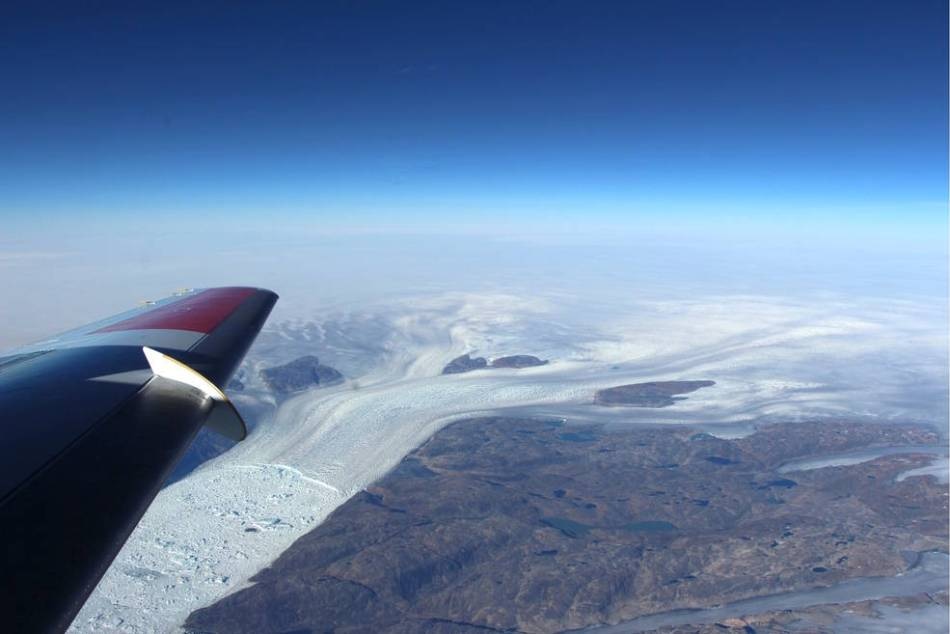Sep 7 2016
 Helheim Glacier, with its characteristic wishbone-shaped channels, as seen from about 20,000 feet in the sky. Credits: NASA/Operation IceBridge
Helheim Glacier, with its characteristic wishbone-shaped channels, as seen from about 20,000 feet in the sky. Credits: NASA/Operation IceBridge
Operation IceBridge is NASA’s airborne survey of polar ice, and for the second time this year it is flying in Greenland in order to observe the impact caused by the summer melt season on the ice sheet.
The IceBridge flights, commenced on Aug. 27 and will resume until Sept. 16. These flights are mostly repeats of lines that the team flew in the beginning of May, to enable scientists to observe modifications in ice elevation between the spring and late summer.
Earlier in IceBridge’s history, we only surveyed the elevation of these glaciers once a year, but these glaciers experience the climate year-round. Now we’re starting to complete the picture of what happens to them as the year goes on, especially after most of the summer melting has already occurred, so we can measure their cumulative response to that melt.
Joe MacGregor, Glaciologist, NASA’s Goddard Space Flight Center
MacGregor is IceBridge's deputy project scientist.
A high-priority flight that IceBridge carried on Aug. 29 shows Helheim Glacier, together with its characteristic wishbone-shaped channels, as viewed from about 20,000 feet in the sky. Helheim is considered to be one of Greenland’s fastest-melting and largest glaciers.
IceBridge, during the initial week of the summer land ice campaign, flew over glaciers along Greenland’s southwest, southeast and northwest coasts, and also flew over lines that the Ice, Cloud, and land Elevation Satellite (ICESat) flew over Greenland during its operations in 2003-2009, to observe the evolution of ice elevation since then.
Crucial areas in southern and central Greenland, such as the world’s fastest glacier, Jakobshavn Isbræ, will be covered by future flights.
The IceBridge scientists are flying aboard a HU-25A Guardian aircraft from NASA's Langley Research Center in Hampton, Virginia, for this end-of-summer short campaign. The Guardian is a replica of an early-generation Falcon 20 business jet, altered for service with the US Coast Guard and later obtained by NASA.
A laser instrument, carried by the plane, measures modifications in the ice elevation, a high-resolution camera system to image the surface, and an instrument to gather the surface temperature. The limited range of the Guardian, results shorter flights (3.5 hours long) than the 8-hour missions executed during IceBridge’s spring Arctic campaign. However, the team plan to fly twice a day whenever possible.
Operation IceBridge aims to gather data on changing sea ice and polar land and maintaining consistency of measurements between ICESat missions. In 2009, the original ICESat mission ended, and its successor, ICESat-2, is planned for launch in 2018.